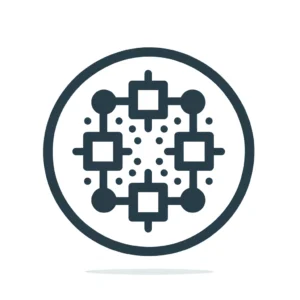“`html
Elon Musk’s SpaceX is set to launch a groundbreaking polar orbit mission funded by Bitcoin mining pioneer Chun Wang, founder of F2Pool. The mission, named Fram2, marks a unique journey as it takes a crew of four over the Earth’s North and South Poles—an orbital path that has never been attempted in human spaceflight.
The Mission Overview
Fram2’s crew will embark on their journey aboard a SpaceX capsule, launching late Monday night at 9:46 p.m. ET from Florida. Unlike previous human missions that have typically followed equatorial paths, this mission will achieve a 90-degree inclination, flying directly over both poles. While polar orbits are commonly used for satellites dedicated to Earth observation, Fram2 will be the first human spaceflight to utilize this trajectory.
The Crew
The four-member team includes Chun Wang, Norwegian filmmaker Jannicke Mikkelsen, German robotics researcher Rabea Rogge, and Australian explorer Eric Philips. Notably, none of the crew members have been to space before, adding to the mission’s pioneering nature.
About Chun Wang and F2Pool
Chun Wang is a prominent figure in the cryptocurrency world, having founded F2Pool, one of the largest Bitcoin mining pools. At its peak, F2Pool contributed a significant portion of the Bitcoin network’s hash rate. However, as the industry grew more competitive, particularly with the rise of American and Russian miners, F2Pool’s dominance has decreased. Today, the pool accounts for just over 10% of Bitcoin’s total hash rate.
During F2Pool’s early years, Chun Wang personally mined 7,700 Bitcoin, which would be valued at approximately $640 million today. However, Chun revealed that he sold all of his mined Bitcoin in early 2013. “I sold all the Bitcoin from 2011 and 2012 in January 2013 and paid back my initial loan,” Chun said in an interview. At the time, Bitcoin’s price was around $11.
Scientific Opportunities
The Fram2 mission presents several research opportunities. The crew will participate in studies examining the effects of space travel on the human body, including brain fluid shifts and sleep disruptions. These studies will involve MRI scans similar to those conducted on SpaceX’s Polaris Dawn mission.
Space adaptation syndrome, a severe form of motion sickness experienced by more than 60% of astronauts, will also be studied. Current treatments, such as anti-nausea injections, can cause grogginess. The Fram2 team aims to contribute to the development of more effective solutions.
Addressing the Gender Gap in Space Research
One of the mission’s experiments, led by British startup Hormona, will track hormone fluctuations in female astronauts. Mikkelsen and Rogge will use urine test strips during the flight to gather data. Jasmine Tagesson, Hormona’s co-founder, emphasized the importance of the study in addressing a gender data gap in medicine, as only 15% of the more than 700 people who have traveled to space have been women.
Dr. Jerilynn Prior, a professor of medicine at the University of British Columbia, noted that stressors in space could disrupt ovulation and shorten the luteal phase. This experiment could yield valuable insights into how space travel impacts female physiology.
Additional Experiments
The Fram2 mission will also conduct experiments in areas such as growing mushrooms in microgravity, testing exercise routines, and observing polar auroras from orbit. The crew plans to document Steve, a mysterious auroral phenomenon identified in 2016. Dr. Eric Donovan, a space physics expert at the University of Calgary, highlighted the significance of photographing auroras from space—a task that has rarely been performed.
The mission is expected to last three to five days before the crew returns to Earth with a splashdown in the Pacific Ocean.
“`
























